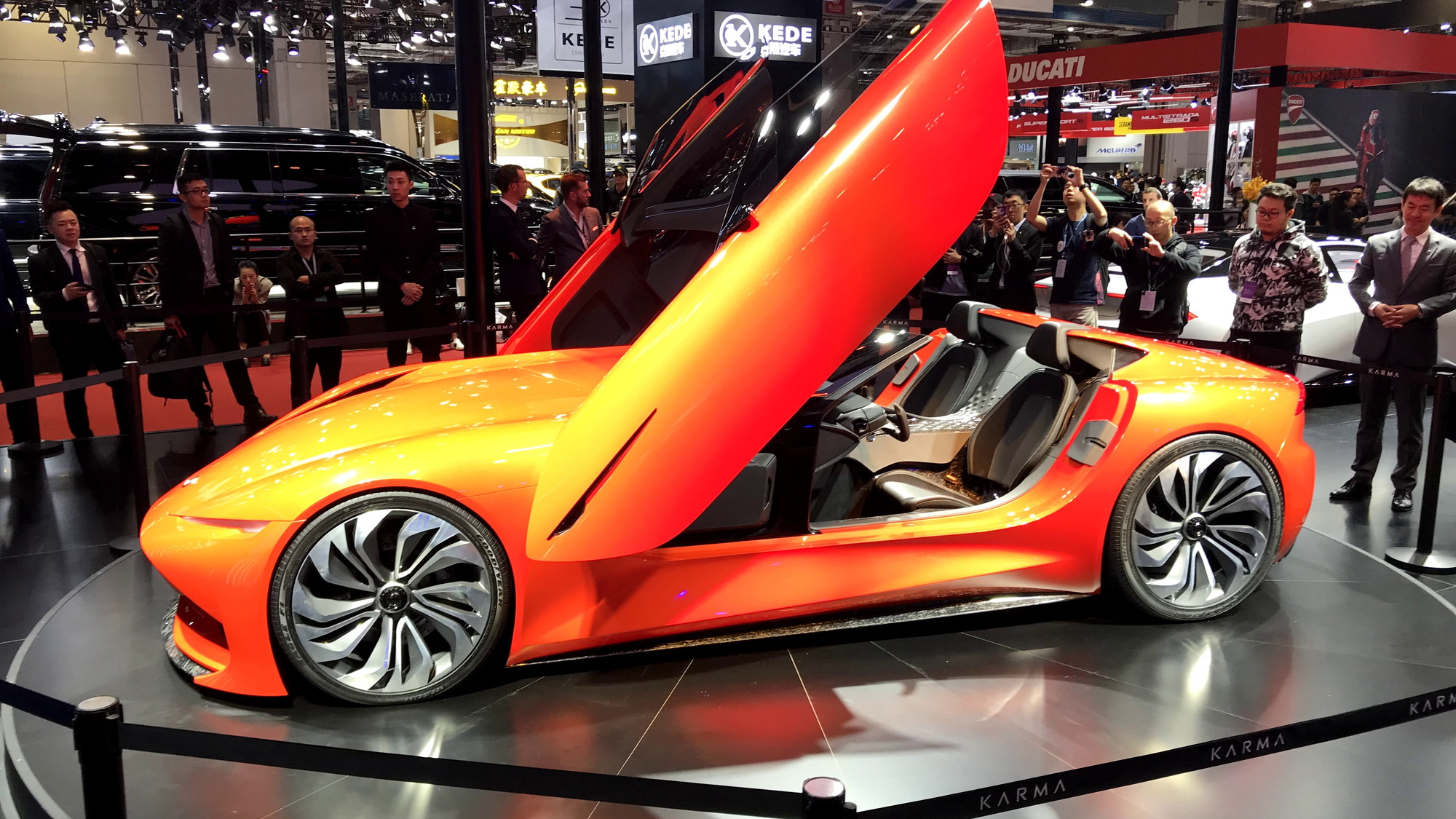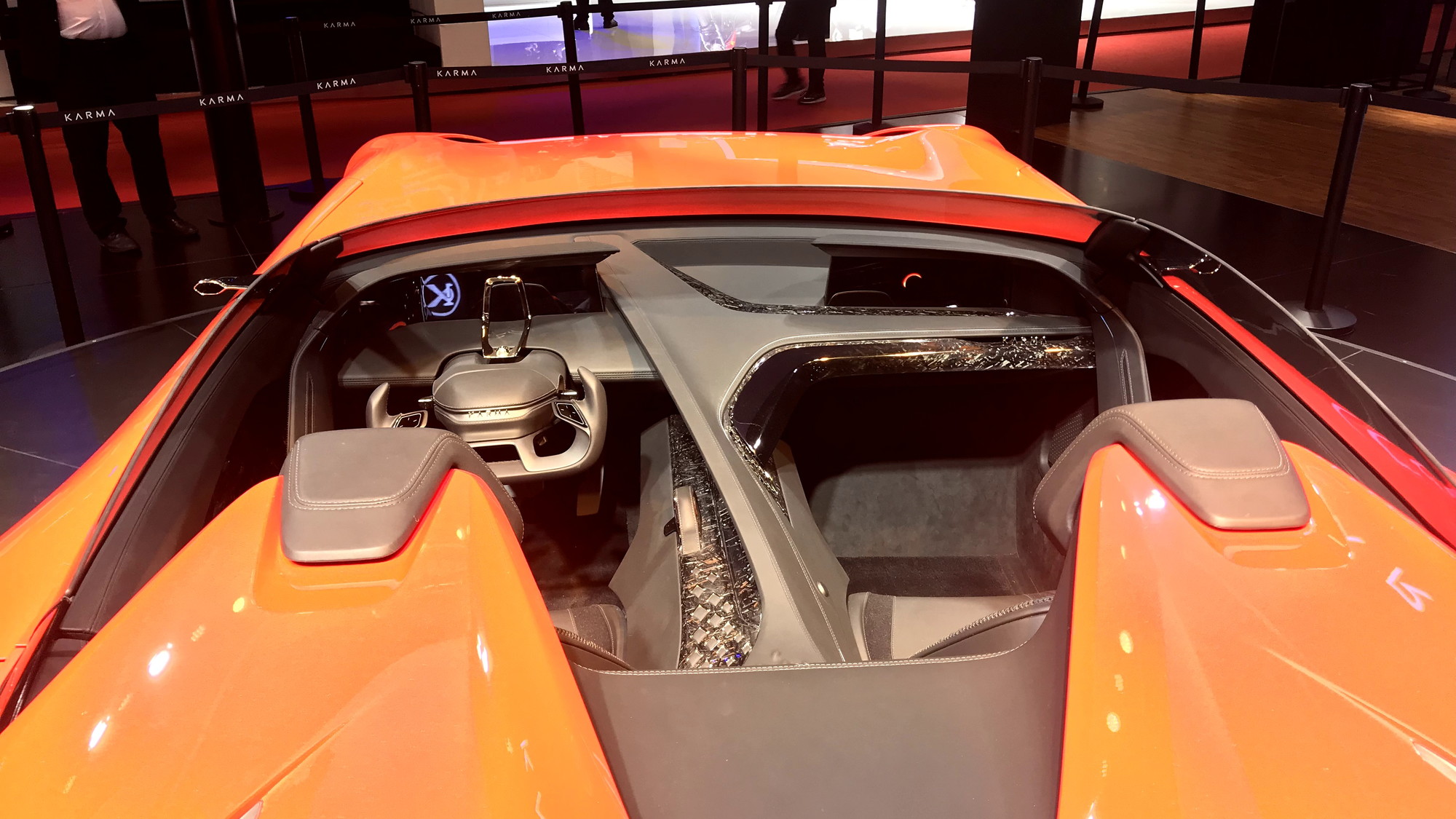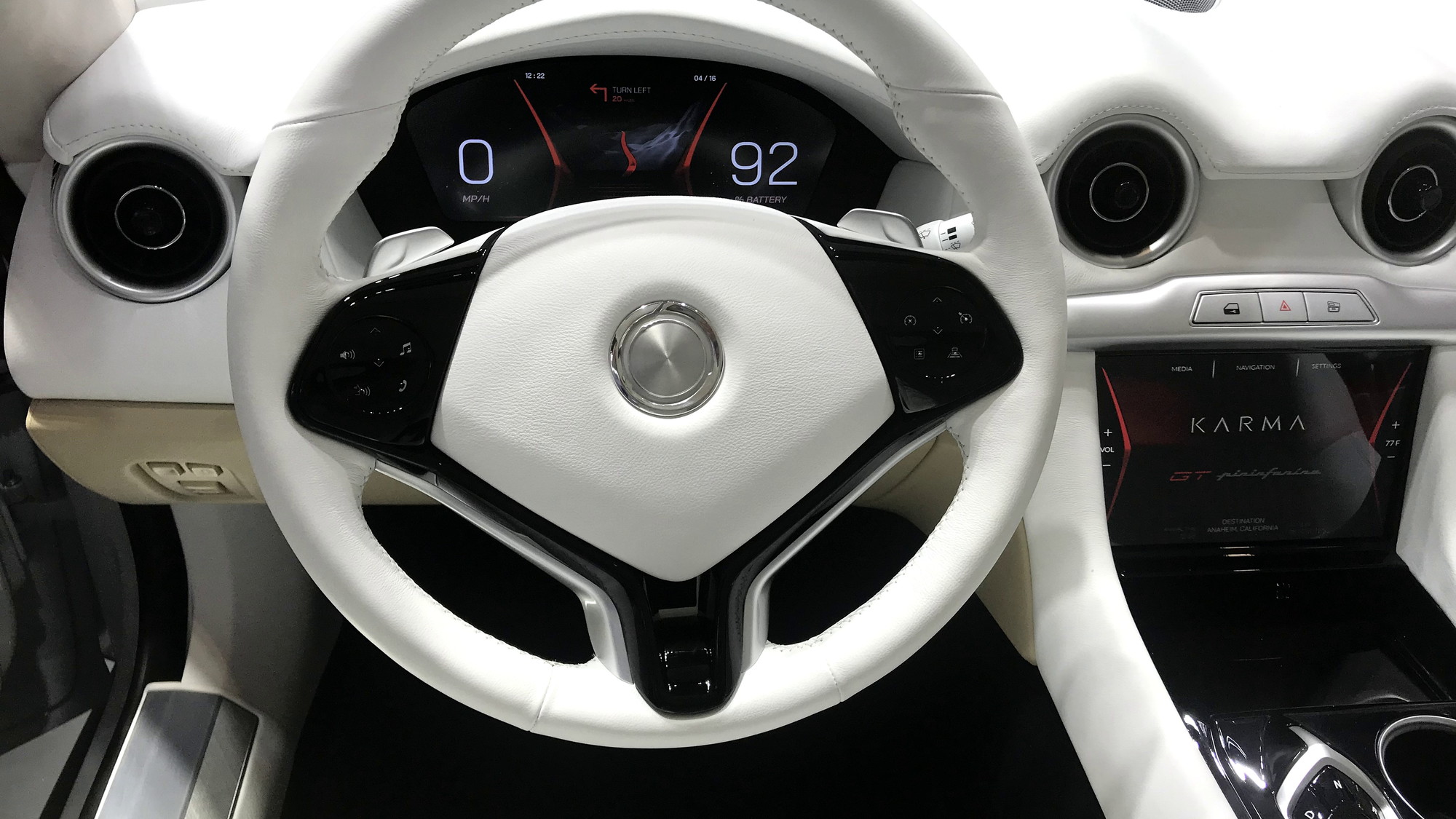Karma Automotive doesn't have just one vision for its future. It has three.
The Southern California automaker unveiled a trio of new vehicles at the Shanghai auto show this week, ranging from a near-production look of the next version of the Karma Revero to a fanciful concept called the SC1.
The third, a design experiment done in partnership with Pininfarina, was present to show another way that the Revero, and Karma's overall design language, could evolve.
The vehicles and the display booth are part of Karma's delayed introduction party to the Chinese market. Even though Chinese automotive supply company Wanxiang Group bought the remains of Fisker Automotive and turned them into Karma in 2014, it is only now that the company is finally ready to start promoting and selling its cars to the Chinese public, Karma CEO Lance Zhou told Green Car Reports.
"We need to sell our brand, we need to sell our technology, we need to sell our strategy," he said, explaining why Karma is participating in the Shanghai show this year. Getting potential customers to visit the booth, which was situated near other luxury brands like Maserati and Bentley, is a good way to enter the massive Chinese auto market.
Automotive sales in China were 28.1 million units in 2018, an unusual drop (down 2.8 percent from 2017) after two decades of steady increases. "We need to participate in this market, start to build our brand image," Zhou said.
The Nikkei calculated that in 2017, almost 90 percent of sales growth in leading luxury automakers and 27 percent of their overall sales came from China.

Karma SC1 Vision Concept - 2019 Shanghai auto show
The three vehicles were there to draw people to the Karma stand, a strategy that obviously worked to generate tons of selfies and social media posts. The SC1 Vision Concept's scissor doors kept opening and closing as the sleek two-seater rotated on its turntable. People were able to sit inside the Pininfarina GT, but it's the new 2020 Revero GT that was there to gin up the most concrete interest since Karma is taking pre-orders now for its first deliveries in China some time by 2021.
Revero GT: More details
As the only almost-ready-for-production model out of the three on display, Karma has released the most information about this model. The 2020 Karma Revero GT is a revised version of the current Revero, which itself is an updated Fisker Karma that first went on sale in 2011. In addition to a few minor design updates, the new Revero GT will use a BMW turbo-3 engine to power the on-board electric generator and "enhance overall vehicle performance," Karma said in a statement.
The Revero GT's 0-60 time will be 4.5 seconds, thanks to rear-wheel drive with two electric motors and it will have up to 80 miles of electric range and a total range of 360 miles from its battery and gas tank. The car has a Level 2 plug and a 6.6-kilowatt onboard charger that will fill the 28-kilowatt-hour LiFePo4 battery in about four hours.

Karma Automotive powertrain
The 2020 Karma Revero GT also has a 45-kw DC fast charger that Karma says will get the battery to 90 percent full in 34 minutes using 480 volts at 125 amps.
Angling for the mass market
Talking to potential customers is only one reason Karma is introducing itself to China now, Zhou said. The other is that he wants to start talking to companies that Karma could partner with, to move into the next phase of its operations: producing mass-market vehicles.
While Zhou said Karma will always build its luxury models in California and export them around the world, that might only account for 500 to 1,000 sales in a good year. Karma wants to get into the mass-market game, and that means building at least 100,000 vehicles annually, he said. If you can't do that, it's difficult to amortize investments and make profits.
“We have focused on craftsmanship for luxury cars. Mass production we are not so good at,” he said. “We are looking for partners who have production experience, supply chain experience and also dealers.”
Karma hasn't yet started talks with possible partners, but Zhou said he hoped the Shanghai debut will open some doors. He said that Karma is open to working with both traditional OEMs and other start-ups, since large automakers have the knowhow to build hundreds of thousands of cars a year while new companies can bring in fresh ideas.
Not partnering will only make his company's work more difficult, he said.

Karma SC1 Vision Concept - 2019 Shanghai auto show
“I think Tesla walks a tough road,” he said. “If they can work together with a big OEM and utilize technology and expertise, they will be much better than today. I think the best company for the future is not a traditional OEM and it's also not a new EV producer. I think the best one is a combination of both.”
The fully electric future
The rocket-like sheetmetal of the SC1 Vision Concept hid another part of Karma's future: one that is not a combination at all. The SC1 is fully electric, and Zhou said that while he sees gas-powered range extenders having a place in the luxury segment for the next 10 or 20 years because charging infrastructure will still not be fully fleshed out in that time, he recognizes that EVs will come to dominate.
“I do believe in the future, the main powertrain is going to be pure electric,” he said, adding that he expects Karma's line-up to be 70 percent pure EV and 30 percent range extenders in the coming decades. “That's the reason our company will have two solutions. We will develop a pure EV along with our extended range powertrain.”


















